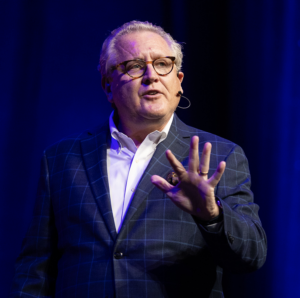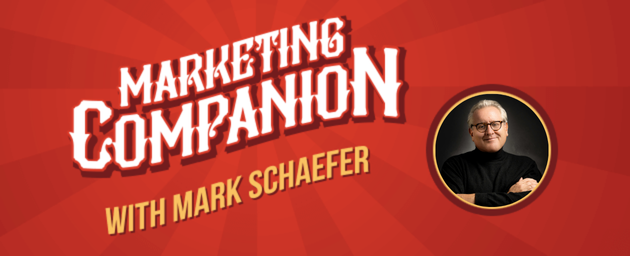
There has been a flurry of new evidence emerging about mysterious Rage Farms and their relentless attacks on politicians, businesses, brands, and individuals.
The Cracker Barrel example was just the most recent meltdown. Companies like Microsoft, Amazon, Boeing, McDonald’s, TD Bank, and American Eagle have suffered withering attacks from legions of coordinated, fake social media accounts.
 “Disinformation-as-a-Service” has become a profitable, global criminal enterprise: low-cost, high-impact bot networks hired to attack and destroy businesses and individuals … like you. And the social media platforms that could stop them won’t, because chaos is profitable.
“Disinformation-as-a-Service” has become a profitable, global criminal enterprise: low-cost, high-impact bot networks hired to attack and destroy businesses and individuals … like you. And the social media platforms that could stop them won’t, because chaos is profitable.
Propelled by AI, these strikes are targeting brands big and small. And the financial consequences are real — sliding stock prices, damaged brand equity, ruined careers.
There has been a lot of online chatter about the anonymous AI agents wreaking this havoc, but I wanted to know more. WHO is doing this? WHY are they doing it?
I’m alarmed that any of us can be attacked by these anonymous criminals. So I went down the rabbit hole to find out who’s behind this … and what we can do about it.
Today I will cover:
- How these bots attack controversial issues at blinding speed
- The evidence that these are coordinated attacks
- How AI bots “prepare” for their next fight
- How momentum from fake bots enters the culture and becomes amplified by real people
- The probable goals of Rage Farms, including financial gains from stock market manipulation
- Why Rage Farm controversies are disconnected from true consumer sentiment
- Expert views on preparing for a Rage Farm attack
A clue: The speed of attack
The first clue that we’re observing sophisticated, coordinated efforts at Cracker Barrel and other brands is the speed of the online attacks. Once a small amount of negative sentiment circulates about a brand, the disinformation ramps up immediately and relentlessly.
According to The Wall Street Journal, AI-powered bots rapidly spin up “grassroots-looking” campaigns around incendiary or divisive issues (like culture-war topics), and keep them trending.
Fake bots authored 44.5% of X (Twitter) posts mentioning Cracker Barrel in the 24 hours after the new logo gained attention on Aug. 20, 2025. That number rose to 49% among posts calling for a boycott.
Within a few hours, X saw around 400 negative Cracker Barrel posts per minute. Seventy percent of the accounts promoting boycotts at that point used duplicate messages, a key marker of coordinated bots, said Molly Dwyer, director of insights at PeakMetrics.
Rage Farms: The business of creating chaos
A Cyabra investigation revealed more specifics about the coordinated Cracker Barrel attack. By analyzing thousands of profiles engaged in the conversation, Cyabra mapped inauthentic behavior patterns and exposed a coordinated strategy.
The data show a substantial portion of the negative discourse was manufactured by fake accounts working to amplify hostility, promote boycott narratives, and undermine public trust.
- Multiple reports found that about 35% of online activity criticizing Cracker Barrel was driven by fake accounts, with at least two organized bot groups fueling much of the outrage.
- Fake profiles created hundreds of posts and comments specifically crafted to damage Cracker Barrel’s reputation, and the manufactured campaign had nearly 5 million potential views.
- These fake profiles also triggered 3,268 direct engagements from genuine profiles. This is important because when real people engage with fake information, it gives fake posts a powerful boost on the X algorithm.
Fake profiles pushed hashtags like #BoycottCrackerBarrel and #CrackerBarrelHasFallen, creating the impression of a massive consumer revolt … that was not happening in real life.
The attack momentum
These accounts made exaggerated claims about an imminent financial collapse, often stating that the company’s stock price would “crash” and that restaurants would soon close nationwide.
They promoted deleting the Cracker Barrel app and announced they would never set foot in any of the chain’s stores or purchase any of its products. By falsely portraying the boycott as successful, these profiles created a self-fulfilling prophecy of declining consumer confidence.
Noting the online wave of attention (and unaware that most of it was fake), prominent political accounts like Senator Marsha Blackburn (R-Tennessee) and Donald Trump Jr. piled on with their own takes on the controversy and began targeting the company’s CEO, Julie Messino.

After his son’s post, President Trump weighed in on Truth Social against the new logo. And when that level of celebrity contributes to the conversation, the illusion of failure becomes reality.
On Aug. 26, Cracker Barrel reversed course and cancelled a $700 million rebrand.
This effort, primarily backed by two organized Rage Farms, succeeded in:
- Creating an illusion of consumer rejection: Flooding platforms with negative content manufactured the appearance of widespread customer abandonment.
- Framing a routine change as catastrophic: What might have been viewed as a standard brand refresh was positioned as a devastating mistake through coordinated messaging.
- Generating mainstream media coverage: The manufactured outrage attracted attention from most major news outlets, further amplifying its reach.
- Establishing persistent negative narratives: Strategic hashtag deployment ensured negative framing dominated search results and social conversations about the brand.
The obvious question is, who did this?
Who is behind a Rage Farm?
Cyabra CMO Rafi Mendelsohn told me that his research firm checks 600 to 800 parameters, including location, posting frequency, and the use of AI-generated avatars, to declare whether accounts are human or not.
Some of these fake accounts “prepare” for attacks by posting real content for months to build credibility and attract an audience. The accounts within a Rage Farm also interact with each other, further enhancing their status within the X algorithms.
But who is creating this coordinated mayhem?
“The answer to that is — who is behind all crime?” said Mendlesohn. “It could be a range of different actors, including state-backed crime or organized crime, syndicate crime, political crime, or small networks of lone individuals. It could even be competitors or financial players looking to impact the share price.
“The anonymity that malicious actors are allowed through fake social media accounts enables them to operate without much risk. We can detect fake accounts, but we can’t tell exactly who is behind them. We can look at the behavior of those accounts and their content, and if it’s manipulated, but we can’t tell you the IP address because we don’t have access to that information. We can’t say, ‘this is an office block in Moscow, or it’s a group of angry people in Texas.’ It’s impossible to do that, and that’s by design, right? That’s why it’s so effective. The anonymity is powerful.”
According to Rafi, the main motivations behind coordinated brand attacks include:
- Money, power, and influence
- State-backed actors looking to cause chaos and disrupt social harmony
- Financial manipulation (e.g., targeting ticker symbols)
- Ideological reasons and culture wars (e.g., “go woke, go broke” narratives)
- Amplifying emotional or controversial topics to sow chaos
- Commercial adversaries creating false narratives about a brand’s stance on social issues to harm the brand’s reputation
In addition to the obvious “anti-woke” ideological amplification in the Cracker Barrel example, there could have been stock market manipulation since this is a publicly traded stock (CBR). If a Rage Farm can manufacture a rapid change in brand sentiment, it increases the odds of gap-downs and forced follow-on selling — the environment where short sellers make the most money in the least amount of time.
Criminals behind the attack could have manufactured the online sentiment slide, and made millions by shorting the stock.
The disconnect from consumer reality
I think it’s critical to add that there is probably no correlation between online rage — whether real or manufactured — and true customer sentiment.
In a comprehensive analysis, researchers Brad Fay and Rick Larkin compared the online sentiment of 500 brands versus the sentiment of everyday consumers. They concluded that there was “no meaningful correlation between online and offline discussions for brands.”
Of course, this also means that brands can’t rely on “social media listening” as a proxy for broader consumer sentiment or to evaluate the complete impact of any decision or campaign … but that’s a story for another day.
In summary, AI-propelled, fake social media accounts created and amplified a national controversy, and even if some of the online discontent was genuine, it almost certainly didn’t reflect the sentiment of the company’s real customers.
“In any other crime, you can see it being committed,” Rafi Mendelsohn said, “You can see the act. But in this case, you are consuming content in your feed. You can’t grasp the big picture. You have no idea the crime is being committed, and you might be part of it.
“We’re just this passive victim, not even knowing what it is that we’re seeing, but we know it made us feel angry, or it tapped into a certain emotion, and we might even want to move on from the brand … and that’s what it’s designed to do.”
While companies like Cyabra can’t pin down IP addresses and eliminate bad actors, X can. But they won’t. Controversy of any kind drives engagement. Engagement drives advertising. In summary, hate is good for business.
“Brands can find themselves in hot water, not just because of something they’ve done, but purely by virtue of being in the wrong place at the wrong time,” Rafi said. “Fake accounts can escalate a situation to the point that it gains media attention and impacts the brand’s reputation.”
What can we do about Rage Farms?
So the only organizations that can protect us (like X and Facebook) won’t do so because it would hurt their businesses. What are our options?
In addition to Rafi from Cyabra, I solicited advice from corporate communications experts Kami Huyse and Daniel Nestle. Here is the advice:
Keep your head down.
If a controversial topic is brewing, Rage Farms are looking for anything they can grab onto in order to amplify chaos. Brands are easy targets. (Rafi)
Prepare.
If you’re launching a rebrand, product change, campaign, or major announcement — map out how it could be framed negatively. What narratives could be constructed? What emotional triggers (tradition, identity, politics) exist? (Rafi)
Monitor as if you’re NORAD.
Invest in the right listening platforms that flag anomalies and suspicious activity in real time. Spot the patterns before they explode. (Dan)
Be proactive.
It has reached a point where brands must have a bot-attack crisis plan. Even if they aren’t in a traditionally controversial company or industry. We now have a decision tree in all of our clients’ communication playbooks, from large to small. We have pre-written some messages that allow our team to quickly without waiting for multiple approvals. This allows us to identify patterns early, remove harmful content, and escalate issues when needed. (Kami)
Run crisis simulations using AI.
Create and maintain personas for all of our audiences (especially media and investors), and if we have synthetic data, even better. We can use these to role-play scenarios, test messages, and get feedback. Learn from the simulations, load pre-approved messaging, and accelerate response speed and accuracy. (Dan)
Relentlessly build trust and credibility with audiences.
This should be what we already do, but most of the time it’s just lip service. We should create experiences, invest in brand marketing, deploy frequent and authentic executive communications, treat our employees as our most important audience. All the important stuff. We won’t stop the bots, but we can short-circuit them with a durable, believable, well-loved, and very human brand. (Dan)
Show active listening.
If a crisis hits, acknowledging legitimate concerns, showing willingness to listen and adjusting (rather than doubling down blindly) helps reduce amplification of negativity. (Kami)
Don’t engage.
AI bots comment on each other’s posts to trick algorithms into thinking there’s an authentic conversation, which then makes the malicious conversation start to appear to people who might have the same or opposite point of view, or both. Engaging with bots rarely helps and often amplifies the problem. (Kami)
Activate fans.
When bots rush in, your best defence isn’t more bots — it’s real people. Loyal customers, brand advocates, influencers who genuinely care and share. Build and mobilize this community ahead of time so that when something hits you, the “real counter-voice” is already in place. (Rafi)
Don’t treat this as a “PR problem.”
This is company-wide reputational security. (Rafi)
In this environment, every brand must assume it could be next. Preparedness is no longer optional. The networks, the bots, the narratives are waiting. The brands that win will be those who anticipate and build resilience now, not just after the storm hits.
Rage Farms: Final thoughts
Everything above is good advice.
It’s also exactly what the attackers want.
They want brands to be bland. Executives to be scared. Marketing to play it safe. Democracy to be fragile. Trust to erode.
The Cracker Barrel case is not an outlier — it’s a harbinger. This is our new, true reality, and I am concerned on three levels:
- Great marketing is not about conformity. It is about non-conformity. Will surviving in this Rage Farm world mean that everything is vanilla now? What level of creativity is worth an attack like this?
- Marketing has changed the world for the better by taking risks, by helping people speak up and stand out, by calling attention to societal problems and new solutions. Will that aspect of our profession wither?
- I am deeply sad and concerned that the Rage Farm attacks focused on individual executives. These are hard-working people with families and careers, trying to do their best for a company. We all make mistakes. But nobody deserves to live in fear of physical attacks on their families because of a logo redesign.
When anonymous criminals can destroy careers over a brand re-launch, they’re not just attacking our businesses. They’re attacking our ability to speak truth and stand for something.
There is hope
Let me end this article with a ray of hope.
I’ve been around long enough to say with authority that every technological development is eventually weaponized. But we figure it out and neutralize it over time.
Regulating technology to protect our personal and business interests is a slow process. But it does happen, every time. Remember … Rage Farm attacks on our brands are a secondary concern. They are also attacking our democratic processes.
Watch the news. Countries will begin to fight back.
- A few years ago, Singapore introduced a statute that explicitly targets what it calls “false statements of fact” disseminated online, signalling a governmental willingness to treat bot campaigns and manipulated networks as more than mere marketing or PR mishaps.
- The EU requires the biggest social platforms to report and act on manipulation campaigns and bot-driven disinformation, providing a blueprint for how law can begin to counter Rage Farm attacks.
- In the U.S., law enforcement isn’t just watching. The DOJ recently announced the seizure of nearly 1,000 social media accounts tied to an AI-powered Russian bot farm that spread disinformation.
A solution is not easy or imminent, but I don’t think Rage Farms will be free to sow their chaos forever.
And remember, the best defense against synthetic rage is authentic trust, earned one customer at a time.
The Most Human Company Wins. Stay strong.
 Need an inspiring keynote speaker? Mark Schaefer is the most trusted voice in marketing. Your conference guests will buzz about his insights long after your event! Mark is the author of some of the world’s bestselling marketing books, a college educator, and an advisor to many of the world’s largest brands. Contact Mark to have him bring a fun, meaningful, and memorable presentation to your company event or conference.
Need an inspiring keynote speaker? Mark Schaefer is the most trusted voice in marketing. Your conference guests will buzz about his insights long after your event! Mark is the author of some of the world’s bestselling marketing books, a college educator, and an advisor to many of the world’s largest brands. Contact Mark to have him bring a fun, meaningful, and memorable presentation to your company event or conference.
Follow Mark on Twitter, LinkedIn, YouTube, and Instagram
Image courtesy Mid Journey


